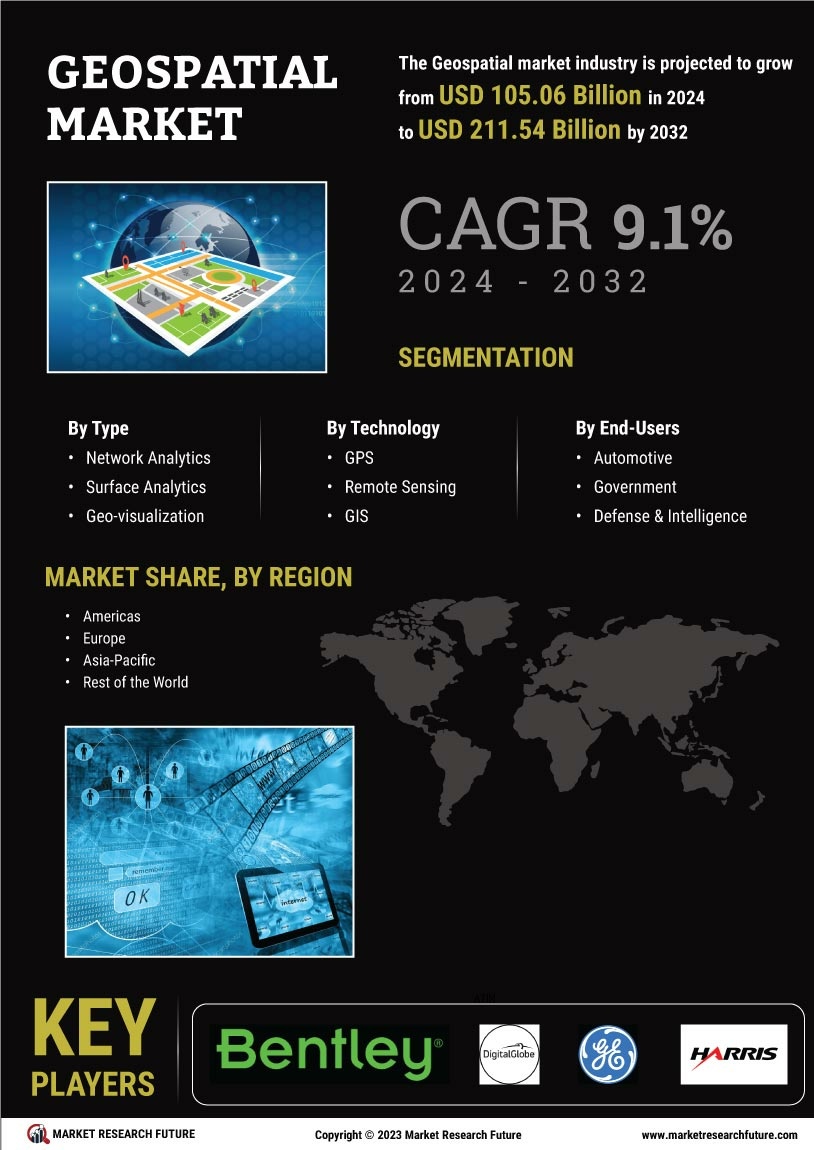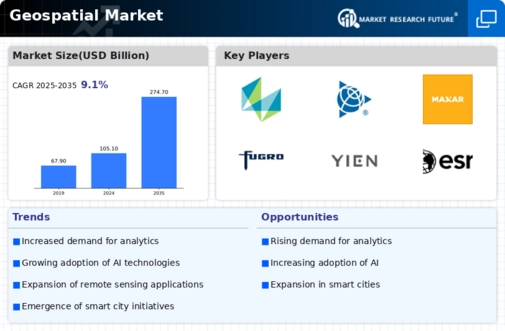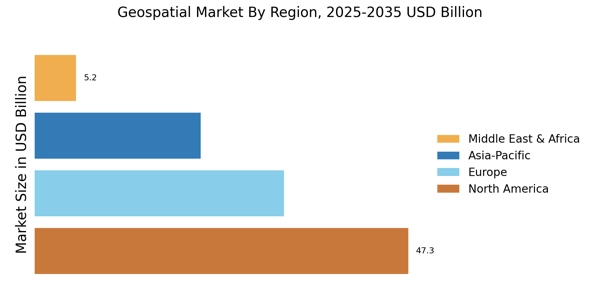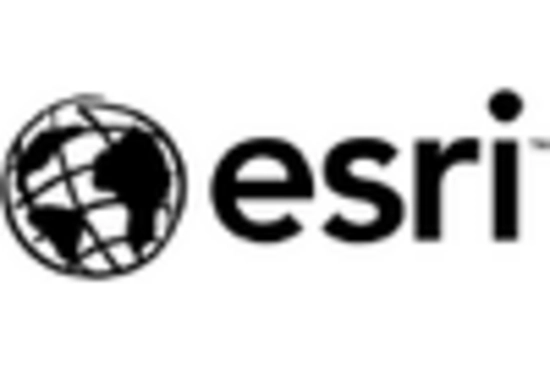Advancements in Satellite Technology
The Geospatial Market is experiencing a notable transformation due to advancements in satellite technology. Enhanced satellite capabilities, including higher resolution imagery and improved data collection methods, are driving demand for geospatial solutions. The proliferation of small satellites, often referred to as CubeSats, has made it more feasible to gather high-quality geospatial data at lower costs. This trend is reflected in the increasing number of satellite launches, which reached over 100 in 2023 alone. As organizations seek to leverage this data for applications ranging from urban planning to disaster management, the Geospatial Market is poised for substantial growth. The integration of satellite data with other geospatial technologies further enhances its utility, suggesting a robust future for this sector.
Growing Demand for Location-Based Services
The Geospatial Market is witnessing a surge in demand for location-based services (LBS), driven by the increasing reliance on mobile devices and the internet. Businesses across various sectors, including retail, transportation, and logistics, are leveraging geospatial data to enhance customer experiences and optimize operations. According to recent estimates, the LBS market is projected to reach USD 100 billion by 2026, indicating a significant opportunity for geospatial service providers. The ability to analyze consumer behavior through geospatial insights allows companies to make informed decisions, thereby increasing efficiency and profitability. This trend underscores the critical role of geospatial technologies in shaping modern business strategies and highlights the potential for continued expansion within the Geospatial Market.
Increased Investment in Geospatial Startups
The Geospatial Market is experiencing a wave of investment in startups focused on innovative geospatial solutions. Venture capital funding for geospatial technology companies has surged, with investments reaching over USD 5 billion in 2023. This influx of capital is fostering innovation and enabling the development of cutting-edge applications, such as real-time mapping and advanced analytics. Investors are recognizing the potential of geospatial technologies to address complex challenges across various sectors, including agriculture, transportation, and environmental monitoring. As these startups continue to emerge and evolve, they are likely to drive further advancements in the Geospatial Market, creating new opportunities for growth and collaboration.
Regulatory Support for Geospatial Initiatives
The Geospatial Market is benefiting from increased regulatory support for geospatial initiatives across various regions. Governments are recognizing the importance of geospatial data in decision-making processes, leading to the establishment of policies that promote data sharing and collaboration. For instance, initiatives aimed at enhancing access to geospatial data for public use are gaining traction, which could potentially lead to a more informed citizenry and improved governance. The establishment of national geospatial frameworks is also indicative of this trend, as countries seek to standardize data collection and usage. This regulatory environment is likely to foster innovation and growth within the Geospatial Market, as stakeholders are encouraged to develop solutions that align with these supportive policies.
Integration of Geospatial Data in Smart Cities
The Geospatial Market is increasingly intertwined with the development of smart cities, where geospatial data plays a pivotal role in urban planning and management. As cities strive to become more efficient and sustainable, the integration of geospatial technologies is essential for optimizing resource allocation and improving infrastructure. The Geospatial Market is expected to exceed USD 2 trillion by 2025, with geospatial data serving as a foundational element in this transformation. By utilizing geospatial analytics, city planners can better understand traffic patterns, environmental impacts, and population dynamics. This integration not only enhances the quality of urban life but also positions the Geospatial Market as a key player in the future of urban development.


















Leave a Comment